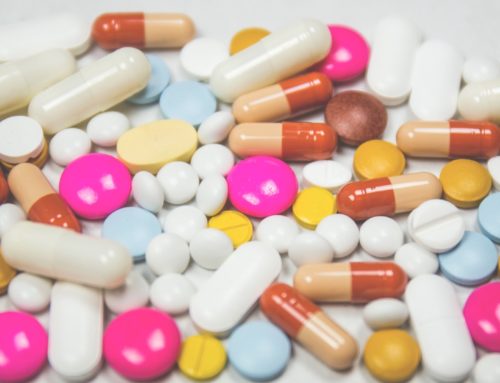“Within weeks, your taste buds will change, and you’ll lose interest in the unhealthy foods you once thought you could never live without.” — Joel Fuhrman, Author of Eat To Live
Being addicted to junk food is a very real affliction, with a plethora of increased risk factors for disease arising as a result, alongside no small number of negative consequences for the overall, day-to-day experience of both one’s mental, and physical, health.
Cravings for unhealthy foods are also some of the hardest to overcome.
Research analysis of PET scans indicates that the neurochemical activity that occurs in the brain following the consumption of foods high in sugar or fat is comparable to that of drugs such as heroin, morphine, or opium — so, it’s no kidding that eating junk can be a hard habit to kick (1).
In fact, the more hyper-palatable a food is, meaning the closer it is to the perfect ratio of sugar, salt, and fat that we’re evolutionarily hard-wired to crave, the more likely we are to form a chemical dependency on it (see Bliss Point for more information on this).
A study examining the effects of a ‘guilty pleasure’ treat — i.e. a favourite, typically nutrient-void, food eaten on a regular basis — found that 40% of individuals who are overweight will work three times harder to obtain their guilty pleasure treat when they’ve consumed it every day for a week, than when they haven’t had it at all (2).
Not only does this research exemplify the power of food cravings in dictating our actions and behaviours, but it also goes to show that the more we eat of a particular food item, the more our body begins to crave that item.
Unlike a dependency on substances such as alcohol or tobacco where individuals can largely avoid situations that would encourage any usage— like going to the liquor store or attending a party — individuals struggling with any food-related issue still have to come into contact with the stuff three times per day, 365 days of the year.
These facts make it easy to understand why the failure to adhere to a healthy, whole-foods diet isn’t entirely your own fault — but they don’t mean that it isn’t your own responsibility. Safe to say, no-one is going to work on making healthier habits for you… except you!
However, by becoming consciously aware of the biological mechanisms involved in the development of the craving for particular foods, you’ll stand a much better chance at implementing long-lasting changes that have you swapping Cap’n Crunch for curly kale — in far less time than you might think.
How Food Cravings Work
It might surprise you to know that your body isn’t actually in control of what food cravings you have—instead, this job is assigned (or claimed, rather) by the roughly 100 trillion microbes that reside within your upper and lower gastrointestinal tract.
These microbial communities of gut bacteria control a range of essential functions not only pertaining to digestion, but also the maintenance of our immune systems, the neurotransmission of different hormones, and — you guessed it — the regulation of food-craving related behaviours (3).
You see, dependent on the types of foods we consume on a daily basis, we are either providing an environment that supports the flourishing of helpful, friendly bacteria, or, in the case of poor eating habits, one that allows for harmful, pathogenic microbes to take over and begin running the show — check out my article on The Importance Of A Healthy Microbiome (During A Pandemic!) And How To Build One for more.
Either way, for better or for worse, it’s important to understand that the microbes that exist inside of our bodies are only interested in their own survival; they’re under selective pressure to ensure that the food substances introduced to their habitat are going to increase their biological fitness — even at the expense of the fitness of their host.
“Our palates aren’t just out of tune with our bodily needs. Our palates are out to kill us.” ― Mark Schatzker, Author of The Dorito Effect
Microbes achieve this in two major ways:
(i) they generate cravings for foods that provide them with what they need to survive, or, alternatively, foods that will suppress the survival of competing microbial communities.
(ii) they hijack their host’s nervous system, produce toxins that can alter mood, and even make changes to taste receptors, all in order to increase the likelihood of the consumption of preferred foods.
This effect is also cyclical, meaning that the more food we eat that encourages the growth of these microbes, the more these microbes encourage us to eat said foods (4).
Great…. but fear not, because there’s a way to take back the control!
How To Change Your Cravings For The Better
The good news is that righting any microbial wrongs takes a lot less time than you may think. The bacteria in our microbiome are highly sensitive organisms that can be easily manipulated by the presence of prebiotics, probiotics, antibiotics, and, thankfully, for the purposes of this article: a change in diet.
The other good news is that our taste buds, themselves, undergo a constant process of renewal, with the individual taste receptor cells experiencing a rate of turnover somewhere between 8–14 days.
This means that roughly in only two weeks, you can completely alter your taste perception, and retrain your taste buds to actually prefer the unrefined, whole version of plant foods, over the processed junk you once craved (5).
“We have evidence to back up the idea that even if you go a few weeks without junk foods and animal products high in salt, fat, and sugar, your tastes start to change.”
— Dr. Shilpa Ravella, Gastroenterologist and Professor of Medicine at Columbia
The trouble with processed foods is that they typically contain high quantities of sodium, artificial sweeteners (I see you high fructose corn syrup), as well as saturated and/or trans fats, that — while tasting delicious in the moment of consumption— largely trick our bodies into believing they are receiving much more nutrients than what is actually being provided.
This goes back to our evolutionary hard-wiring where high flavour = high nutritional density, and high sugar = high energy. This was, of course, when the only foods available to be eaten, were ones that could be picked from the soil, dug up from the ground, or cut down from the trees.
So what happens if we were to “reset” our tastebuds, so to speak, in an attempt to kick those pesky misguided cravings, and would it really only take two weeks?
One research study found that 95% of participants who cut out all added sugars and artificial sweeteners for 14 days, subsequently reported that the taste of sweet foods was now heightened, or, altogether too sweet for their preference. 75% of participants felt that sources of natural sugar, such as fruit, increased in flavour profile and perceived sweetness, and 86.6% of participants said that they stopped craving sugar around the 6-day mark (6).
Similar findings occurred when researchers placed individuals on a low-salt diet. The taste of salt-free soup gradually improves with time, and participants actually begin to enjoy the taste of salty soup less and less (7). There’s a joke among this community that you shouldn’t let the person who never salts their food cook you dinner — it will likely taste wonderful to their sodium-sensitive buds, but might more closely resemble a flavour profile akin to cardboard, to you.
In addition, it wasn’t until very recently that scientists began to consider that humans might respond to the taste of fat in the same way they do to the taste of sweet, sour, or salty. There now exists scientific evidence for the idea that for people accustomed to eating a high-fat diet, their threshold of taste becomes attenuated to the presence of fatty acids, and no longer perceives what they’re eating to provide an adequate dose of that which they crave (8, 9). Cue a resulting increase in dependency on these unhealthy foods…
Alternatively, research estimates that if we give it a few weeks, we can correct this blunted taste effect and increase our sensitivity to fat. This leads not only to a reduction in cravings for these foods as we alter our microbiome to suit a healthier lifestyle but also to a far tastier and more satisfying experience when we do choose to consciously indulge (10).
If it’s unhelpful to think about having to completely overhaul your diet and permanently alter your lifestyle, it might be useful to view these two weeks as a challenge of sorts. Even if you completely fail to eliminate all added sugars or processed carbohydrates, you’re likely still having a big impact on your sensitivity to these foods — you might be surprised at the end of the experiment to find yourself enjoying particular flavours more and more.
What’s more, is that if you make sure to adjust your eating habits accordingly with each minor improvement you experience, you don’t even have to think about a complete dietary U-turn, just focus on taking things 2 weeks at a time.
6 Science-Backed Strategies For Success
“Don’t be alarmed if during the first week or two of healthy eating, you feel worse and the desire to use food to curtail discomfort is heightened. This usually passes within the first four days.” ― Joel Fuhrman
Speaking of the actionable implementation of these ideas, here are some strategies to consider employing for your 14-day craving confrontation. I use the word ‘confrontation’ intentionally here because you are going to have to fight your manipulative microbes with everything you got — but remember, it’s only for two weeks.
- Prepare more of your own meals
This idea is one that’s fairly straightforward. By cooking and preparing your own meals, you maintain full control over the ingredients going into them.
If your focus of the two weeks is ongoing salt-free, create a chart that allows you to measure precisely how much (or ideally, how little) salt you’re adding to your food, slowly but surely weaning yourself down to zero.
Eating at home also means a higher likelihood of eating more consciously, avoiding fast food, and dramatically reducing the number of refined and processed foods you come into contact with, making it a totally great place to start.
2. Avoid foods high on the spectrum of sweet, salty, and fat
If possible, try to completely eliminate foods that are going to increase your baseline for the perception of sweet, salty, and fatty flavours. Your taste buds will quickly adapt and reverse their tolerance, making middle-of-the-spectrum foods taste better than ever before.
A useful way to implement this change is to substitute these additives using spices for added flavour. Cinnamon, cardamom, and nutmeg, can all go a long way in a bowl of unsweetened oatmeal or cup of plain coffee to deceive your palate into sensitivity submission.
3. Incorporate stress-reducing activities
Did you catch that part of the research where it said that microbes within your gut have the power to alter your mood by producing inflammatory substances and toxins, thereby making you more likely to give in to your cravings? Well, it’s exactly the reason why it’s necessary to focus on mood improvement and stress management over the course of the two week period.
Practices such as exercise, yoga, and meditation, are all scientifically known to strengthen our willpower by enhancing the activity of our parasympathetic nervous system, and most notably, the outflow from the vagus nerve.
Research indicates that the vagus nerve plays a key role in the regulation of eating behaviour, body weight, and the improved accuracy of food intake relative to energy expenditure (11).
Don’t let unnecessary stress be the reason you cave to your cravings, and incorporate some of the activities you think might help!
4. Aim to eat at between 5–10 different portions of fruit or veg per day
Research shows that individuals who consume a minimum of 30 different whole food plant-based components in their weekly meals have a significantly broader and more beneficial range of microbiota of the gut (12).
If 30 unique plants seem like a lot, start with a range of 5–10 that you’re already familiar with and know that you enjoy. Once your tastebuds have begun to adapt, try to branch out and cook with new foods, pairing them with recipes and flavours you love the most.
Keep in mind that even small and seemingly insignificant foods such as garlic, ginger, chia seeds, flax, lemon juice, or a pinch of spirulina, etc, all count towards your 30 a week, too!
5. Focus on getting slow-release carbs for breakfast
By starting your day with the consumption of slow-release carbohydrates, you set yourself up for success by getting a good morning dose of energy that your body will be able to better maintain throughout the day.
High protein smoothie bowls, cinnamon nut butter bowls of oatmeal, and sprouted or seeded whole-grain toast with spinach, tomato, and avocado are some of the quickest and healthiest go-to’s.
6. Consider eliminating caffeine and alcohol
Coffee and alcohol both have the potential to affect our body’s ability to regulate blood sugar levels effectively. Consider going without, or, at the very least, reducing your intake of these drinks, so you’re not prone to reaching for other high-sugar foods following that inevitable spike and subsequent crash.
Look for a herbal tea you’re likely to enjoy in place of coffee, and increase the amount of water you drink in between any pints or glasses of wine.
And last but not least: you got this! I’ll see you in two weeks.
Alexandra Walker-Jones — January 2021
Text References:
- Volkow ND, Wang GJ, Fowler JS, Logan J, Jayne M, Franceschi D, Wong C, Gatley SJ, Gifford AN, Ding YS, Pappas N. “Nonhedonic” food motivation in humans involves dopamine in the dorsal striatum and methylphenidate amplifies this effect. Synapse. 2002 Jun 1;44(3):175–80. doi: 10.1002/syn.10075. PMID: 11954049.
- Temple JL. Behavioral sensitization of the reinforcing value of food: What food and drugs have in common. Prev Med. 2016 Nov;92:90–99. doi: 10.1016/j.ypmed.2016.06.022. Epub 2016 Jun 23. PMID: 27346758.
- Kostovcikova, K., Coufal, S., Galanova, N., Fajstova, A., Hudcovic, T., Kostovcik, M., Prochazkova, P., Jiraskova Zakostelska, Z., Cermakova, M., Sediva, B., Kuzma, M., Tlaskalova-Hogenova, H., & Kverka, M. (2019). Diet Rich in Animal Protein Promotes Pro-inflammatory Macrophage Response and Exacerbates Colitis in Mice. Frontiers in immunology, 10, 919.
- Alcock J, Maley CC, Aktipis CA. Is eating behavior manipulated by the gastrointestinal microbiota? Evolutionary pressures and potential mechanisms. Bioessays. 2014 Oct;36(10):940–9. doi: 10.1002/bies.201400071. Epub 2014 Aug 8. PMID: 25103109; PMCID: PMC4270213.
- Alcock J, Maley CC, Aktipis CA. Is eating behavior manipulated by the gastrointestinal microbiota? Evolutionary pressures and potential mechanisms. Bioessays. 2014 Oct;36(10):940–9. doi: 10.1002/bies.201400071. Epub 2014 Aug 8. PMID: 25103109; PMCID: PMC4270213.
- Bartolotto C. (2015). Does Consuming Sugar and Artificial Sweeteners Change Taste Preferences?. The Permanente journal, 19(3), 81–84. https://doi.org/10.7812/TPP/14-229
- C. A. Blais, R. M. Pangborn, N. O. Borhani, M. F. Ferrell, R. J. Prineas, B. Laing. Effect of dietary sodium restriction on taste responses to sodium chloride: A longitudinal study. Am. J. Clin. Nutr. 1986 44(2):232–243.
- Stewart JE, Keast RS. Recent fat intake modulates fat taste sensitivity in lean and overweight subjects. Int J Obes (Lond). 2012 Jun;36(6):834–42. doi: 10.1038/ijo.2011.155. Epub 2011 Aug 9. PMID: 21829156.
- F. G. Grieve, M. W. V. Weg. Desire to eat high- and low-fat foods following a low-fat dietary intervention. J Nutr Educ Behav 2003 35(2):98–102.
- R. M. Tucker, R. D. Mattes. Are free fatty acids effective taste stimuli in humans? Presented at the symposium The Taste for Fat: New Discoveries on the Role of Fat in Sensory Perception, Metabolism, Sensory Pleasure and Beyond held at the Institute of Food Technologists 2011 Annual Meeting, New Orleans, LA, June 12, 2011. J. Food Sci. 2012 77(3):S148 — S151.
- Alcock J, Maley CC, Aktipis CA. Is eating behavior manipulated by the gastrointestinal microbiota? Evolutionary pressures and potential mechanisms. Bioessays. 2014 Oct;36(10):940–9. doi: 10.1002/bies.201400071. Epub 2014 Aug 8. PMID: 25103109; PMCID: PMC4270213.
- McDonald, D., Hyde, E., Debelius, J. W., Morton, J. T., Gonzalez, A., Ackermann, G., … & American Gut Consortium. (2018). American Gut: an open platform for citizen science microbiome research. Msystems, 3(3), e00031–18.





